1. Data
1.1. Facts and Figures that lack meaning
1.2. Direct
1.2.1. Collected from an original source
1.2.1.1. Expensive and time consuming
1.2.1.2. May require special equipment
1.2.1.3. Accurate
1.2.1.4. Only the data needed is collected
1.2.1.5. Reliable
1.3. Indirect
1.3.1. Collected from a secondary source
1.3.1.1. Cheap normally
1.3.1.2. Maybe unreliable
1.3.1.3. Accuracy can not be assured
1.3.1.4. Quick to collect
1.3.1.5. May contain unneeded daya
1.4. Types of Data
1.4.1. Boolean (Yes/No)
1.4.2. Real
1.4.3. Integer
1.4.4. Date/Time
1.4.5. String
2. Information
2.1. Static - does not change or changes slowely over time
2.1.1. Often accurate but maybe out of date
2.1.2. Can be used offline
2.1.3. Often licensed
2.1.4. If errors found then needs to be re-written
2.2. Dynamic
2.2.1. Up to date
2.2.2. Inaccuracies not checked
2.2.3. Needs online access
2.2.4. Information overload
2.3. Data that has been processed within a context
3. Knowledge
3.1. Understanding of the rules needed to interpret information
4. Garbage in Garbage Out
4.1. Accuracy
4.1.1. Poorly collected
4.1.2. Human error
4.1.3. Poor equipment
4.2. Relevance
4.2.1. Extra irrelevant data collected
4.3. Age
4.3.1. Data may be out of data
4.4. Completeness
4.4.1. Incomplete data can lead to errors
4.5. Presentation
4.5.1. Presented in an incorrect way
4.6. Detail
4.6.1. Too much detail clouds importance
4.6.2. To little data and information cannot be extracted
5. Coding Data
5.1. Monday - Mon London Heathrow - LHR
5.2. Why
5.2.1. Increases accuracy of data entry
5.2.2. Easier to validate
5.2.3. Less storage
5.2.4. Easier to search
5.3. Problems
5.3.1. Can obscure some data
5.3.2. Coarsens Data
5.3.3. Need knowledge of code
6. Validation and Verification
6.1. Validation
6.1.1. Checks that data is in sensible, reasonable, complete and within boundaries
6.1.1.1. Range Check
6.1.1.2. Type Check
6.1.1.3. Check Digit
6.1.1.4. Length Check
6.1.1.5. Lookup
6.1.1.6. Format Check (Mask)
6.1.1.7. Presence Check
6.2. Verification
6.2.1. Double entry of data
6.2.2. Confirmation of data
7. Backup
7.1. Copying Data to protect against loss
7.1.1. Optical Media
7.1.2. Magnetic Tape
7.1.3. Flash memory
7.1.4. External Harddrive
7.1.5. Online/Cloud storage
7.2. Full backup
7.2.1. All data is copied
7.3. Incremental Backup
7.3.1. Newly written data or changed data is copied
7.4. Storage of backup - must be safe
8. Archive Data
8.1. Data that is no longer needed or rarely needed
8.1.1. Often compressed and indexed
9. Costs
9.1. Hardware
9.1.1. Purchase
9.1.2. Maintenance
9.1.3. Replacement
9.1.4. Storage (mag tapes for example)
9.2. Software
9.2.1. Purchase
9.2.2. Upgrade
9.2.3. Licenses
9.2.4. Support
9.3. Consumables (paper, ink, etc)
9.4. Manpower
9.4.1. Labour (Wages, Pensions, Benefits)
9.4.2. Training
